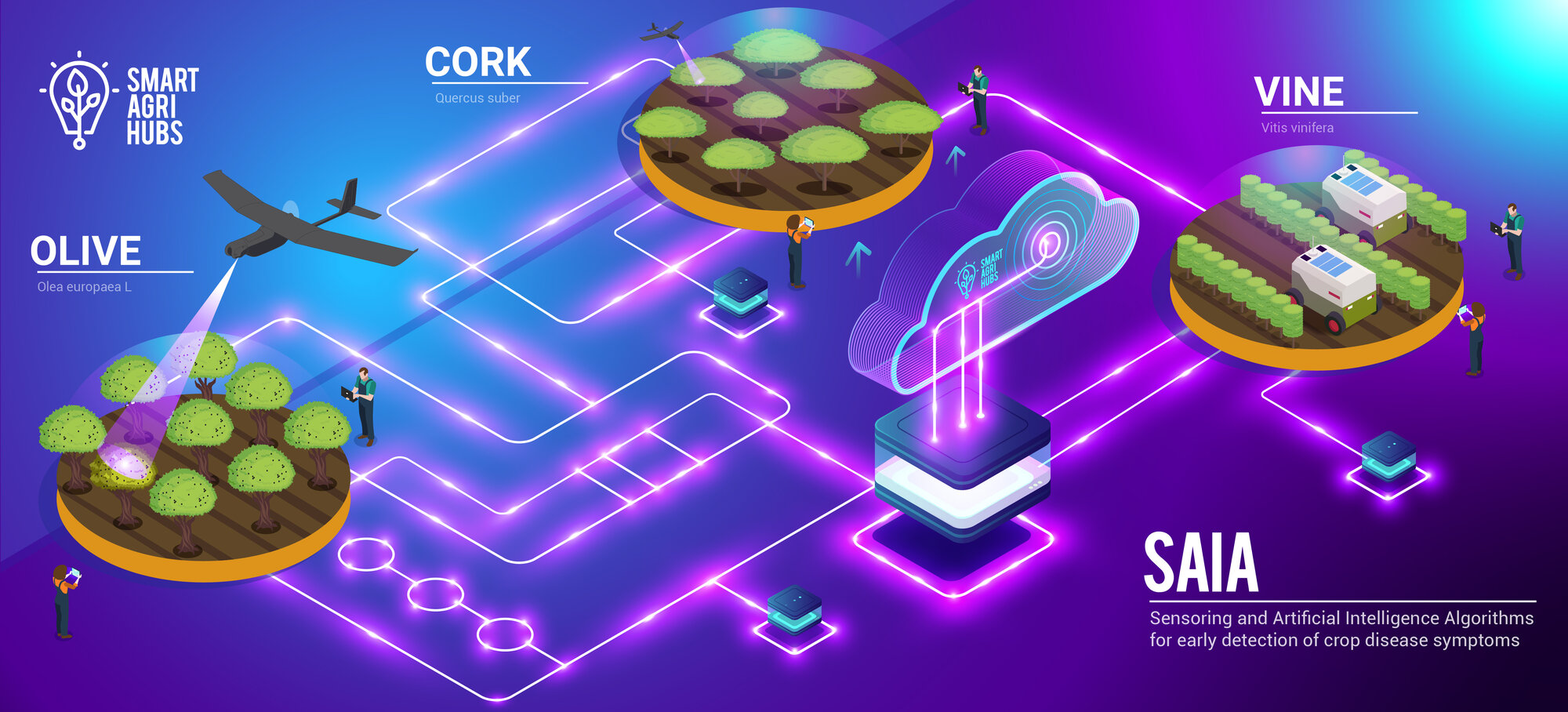Sensoring and AI Algorithms for Early Crop Disease Detection -SAIA
Using digital technologies to produce risk maps so as to facilitate the early detection of plant pests.

Concept
This Flagship Innovation Experiment (FIE) aims to leverage digital technologies for the early detection of plant pests in three different crops: grapevines, cork trees and olive trees. In order to identify the symptoms of plant pests, which can at times be similar for different diseases, at an early stage, the FIE combines key technologies for crop observation such as remote sensors, Artificial Intelligence (AI) algorithms and weather forecast models. Their synergy helps to establish data patterns of symptoms, thereby creating risk maps that support farmers in mitigating the negative environmental impacts of production.
Implementation
On top of that, the analysis of gathered information identifies and characterises the conditions under which certain diseases are most likely to appear in the relevant crops. To facilitate a solution with operational performance, this FIE strikes a balance between the amount of data needed for automatic algorithms to work precisely and the fast coverage of large areas to ensure early detection of contamination.
Lessons learnt:
This FIE has learnt several lessons:
1. The improvement of the communications with the technicians is critical
2. The communication with IoT in the field is not a solved issue
3. The volume of field data is much higher than planned and the organization of the source of the sampling ( trees and track ) required a better record, in particular when trees are removed or cut down; Land markers suffer time and weather degradation which leads to loss of the markers. A better and more robust tree marker should be used.
4. Send-User surveys in more rural and less trained personnel require an earlier approach and action to strengthen trust between End-users and the surveys personnel

